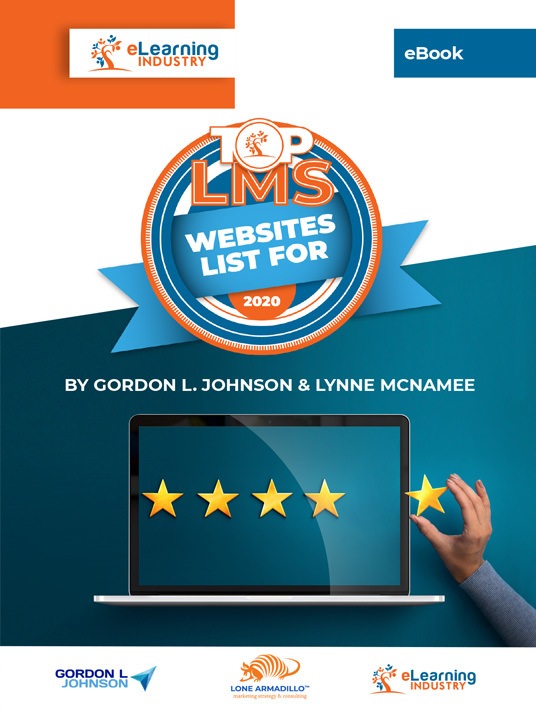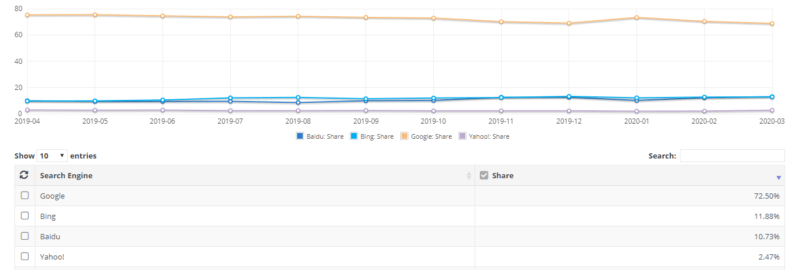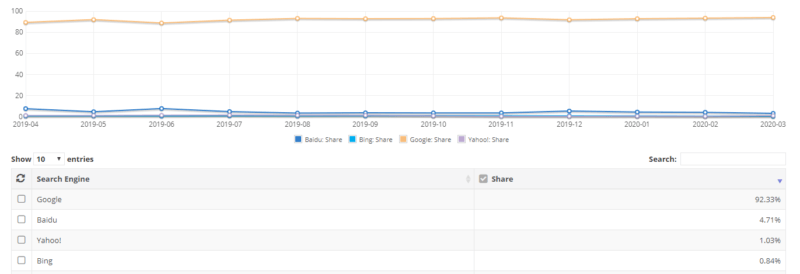What Is SEO Or “Search Engine Optimization”?
At a minimum, every company needs to have a website to be perceived as credible and legitimate. The site creates, for many, the first impression of the brand, product, or service. Its appearance is subliminally tied to consumers’ perceptions of the quality of the product or service itself:
- If the website looks out of date, will the software be outdated, too?
- If a website isn’t user-friendly, will the technology be as clunky?
- If the communication online is poor, what will their customer service be like?
- If the company doesn’t invest in its own brand image, are they investing in the technology they want to sell me?

Yet before these questions can be answered, one must find the website.
That’s where Search Engine Optimization or “SEO” comes in. At a basic level, it’s the “findability” of a website at the time of need—think of it as Just-In-Time content.
The sites that do this well and make our top 10 list maximize this “findability” to streamline the number of pages, results and clicks someone must go through to get the answer they are looking for. Let me explain.
When I’ve taught SEO over the years, I have found that people resonate with the reference to the TV show “Are you being served?” In that program, floorwalkers in a department store greet people at the door and ask what a shopper is looking for. If they answer “men’s blue ties,” that floor walker escorts the shopper to a clerk in the men’s department with the introduction, “this gentleman is looking for a man’s blue tie.” The clerk then starts showing the person men’s blue ties.
Search engines, and for the purpose of this article we will be focusing on Google (more on that later), do the same thing as the floor walker. They serve as the interface between the searcher and the options available. Someone types into the Google search bar “men’s blue ties” and waits for the results. Google’s algorithms try to direct people immediately to what the person is looking for. Sites like Amazon would resemble the clerk in this scenario, as they show a range of men’s blue ties without additional searching required on the site itself. The Search Engine Results Page (SERP) might also include retailers that show men’s ties (but not necessarily blue) or other websites where you can order custom ties of any color for whichever gender. The sites appear in order based on how relevant the returned sites are to the question asked in the search bar.
In this sample scenario, Amazon will likely show up first on the SERP for 2 reasons: 1) their results most exactly match the question put into the search bar and 2) other people reinforced that, when they searched for men’s blue ties, what was shown on Amazon when clicked did, in fact, take them to men’s blue ties. So with both the computer algorithm one-to-one match of the terms typed in and the search engine user base confirming and reinforcing the decision of the computer and previous users, Amazon gains trust. Thus, future searches for “women’s tennis racquets,” even if a relatively new search, will likely show up higher, as there has been so much confirmation that other searches on the site answered the question asked that it will probably do so again in the future.
So, we see that an exact match to the search query and the confirmation of humans that Google got it right get people to the top of the SERP.
Note, this top result is not the result of paid advertising. There is programming in the website so that there is alignment between how a site is evaluated by the search engine and how the website is built—in this example, getting down to matching how people searched: men/ blue/ tie. In addition, there is massive and ongoing curation so that people, not just computers, are validating which websites best answer the questions people are asking.
This people curation piece is very important to remember. At the heart of SEO, what the various search engines are after is to provide the best answer to the question asked. That means humans, not computer robots, spiders, or algorithms, are the final judge and humans are the primary audience. Writing to benefit and serve the reader are the real purposes, values, and keys to success with Search Engine Optimization.
SEO Evolves…So Must Your Website
Not surprisingly, people have tried to scam the system over the years. Remember having the date, visitor counters or event countdowns on websites? There was a time when keyword stuffing or putting a bunch of keywords in the HTML code was tried in an effort to rank higher in the search results. Myriad efforts have been tried over the years with the programmers of the search engines recognizing them and adjusting the algorithms to filter those tricks out…and sometimes to punish offenders.
The real product that Google sells, and hopefully the other search engines do too, is trust. People use Google’s search engine significantly more than any other because Google has built and continues to earn that trust that makes people agree that the results provided will efficiently and accurately answer the question posed. On the contrary, any effort by a web designer that violates that trust will not fare well, at least not in the long term.
Thus, the search algorithms regularly change. As long as people try to outsmart the algorithms, new ones need to be made. In addition, people’s search behaviors change and then the new behaviors become reinforced, which further requires website adjustments to keep the site relevant to the expectations and demands of both the search engines and consumers.
Therefore, a website is never done, but rather requires regular updating. To continue to rank highly and be competitive—and thus be found in the running for the community curation part of this—a website will need to meet certain technical standards and certain user standards. Because of the vast amount of data collected, Google “sees” a comprehensive picture of behavior that extends beyond what an individual company or website could gather. The eBook Top LMS Websites For 2020 will help you achieve just that.
For example, mobile.
Rise And Priority Of Mobile-First Websites
In 2015, Google made having a mobile-friendly—as they defined it—website a requirement in order to show up in mobile search results. For 2018, Google has announced that “our algorithms will eventually primarily use the mobile version of a site’s content to rank pages from that site, understand structured data, and show snippets from those pages in our results” [1].
Why would they do this? It was predicted that mobile search would take over desktop search in 2014, which seems to have been accurate [2]. In some countries, like India, Mexico, and Indonesia, it is reported that mobile usage is up to 4 times higher than desktop.
However, what had emerged by mid-2019, which recent events will further emphasize, is what comScore refers to as a “Multichannel Majority.” That is, people in western markets use more than one device, desktop, tablet and smartphone but for different phases of the purchase or for different purposes/experiences.
However, mobile search engine rankings, or their influence on overall rankings, is still relevant, with “time to load” a still very important metric.
What this means is that, although technology solutions, for example, Learning Management Systems, Learning Experience Platforms, learning content management systems or content libraries, might be searched on a desktop computer, the sites won’t appear in search results unless the mobile sites are optimized. The mobile search results are what matters now; there is no distinction between desktop and mobile. So even if the SEO is for a B2B solution, where the searches and reviews occur on desktop, the site must be mobile-optimized for a chance to be seen on desktops.
Don’t forget the community curation element from above, though. This still plays an important part so ensure there is good User Experience on mobile.
Key takeaway: mobile optimization is still foundational for overall Search Engine Optimization, no matter on what device the content is ultimately consumed.
At the same time, the User Experience needs to accommodate desktop and tablet consumption, and not be so tailored to a mobile experience that it is unpleasant or unusable on desktop or tablet.
Some Notes About Google
As referenced above, the reason I’m focused on Google here is because of the dominance they hold in the search market. Reports vary, but as of March 2020, Net Market Share’s numbers of Google with 83% of combined desktop, tablet and mobile traffic, Bing with 6% and Yahoo! with 2% is relatively consistent with other reports. Desktop alone shows Google with 69%, Bing with 13%, and Yahoo! with 3%. Tablet shows Google with 86%, Bing with 3% and Yahoo! with 4%. Mobile is even more dramatic, with Google managing 94% of mobile search while Bing and Yahoo! each with 1%. (Baidu is a Chinese search engine and is not considered here.)
It is estimated that over 5.5 billion searches are handled by Google every day around the world. That’s up by 2 billion a day since last year. To ignore their dominance or their influence on getting your business’s website in front of potential clients is at your own risk. To avoid such pitfalls and make sure you are fully informed on the ways you can make your website appealing to buyers, download the eBook Top LMS Websites For 2020 and benefit from its valuable insights.
Evaluation For This Report
I’ve tried to lay out above an easy-to-understand framework for SEO; what it is, how it works, and fundamental considerations. The truth is, there are many, many details that play into all this, especially as we are dealing with both search engines running confidential, proprietary algorithms that are constantly updated as well as complex human beings who influence and are influenced by the very searches and clicks they make.
Rather than rely on personal opinion, I have run our list of over 300 websites for vendors in this learning technology space through 3 recognized expert tools to measure the sites.
1. Google Mobile Speed Test
Patience is a virtue but not often practiced with websites. If your site doesn’t load quickly, people will back away and go to the next option on the list. So while you may have done all other things right, people won’t wait. You have competition, and people will go there if your site doesn’t load quickly. Especially for a technology solution, if your site won’t load quickly, the implied message is that your technology won’t work efficiently and you’ve just lost a potential customer. As explained above, Google is using your mobile search qualifications to determine the desktop qualifications. This is the most critical consideration for your website. Google has updated their primary focus to the load time on 4G networks in seconds.
For the sake of this top 10 website evaluation, if your site doesn’t load on 4G in under 4 seconds per Google’s test, it is automatically eliminated. If Google isn’t happy, no one else is either.
2. Alexa Rank
Alexa rankings estimate unique visitors and page views over a 3-month period to determine “popularity.” While there are shortcomings with the ratings, as we are consistently using this as a recognized, standardized, and relative measure among the over 300 sites evaluated, it remains, I suggest, a good source for our rankings here.
- Unique visitors
This measures how well the site is attracting new visitors each day. Multiple visits to a page on the same day by the same person do not count as “unique.” SEO in general is trying to attract new people to the site based on quality content. Unique visitors here can include repeat visitors and traffic from paid or direct sources, meaning, ads, links, and someone typing in the full URL into the search bar. - Page views
If people look at multiple pages on a website, it suggests that there is quality content there—part of that community curation—and so visitors will look at more pages. In Google Analytics, a key metric is “time on site.” Here, that number, time, seems to be subsumed into the number of the pages viewed.
Alexa rankings is the primary consideration that was used to rank those sites that met the core criteria outlined here. It represents the fact of how sites actually ranked versus how we might have thought they should rank.
3. Moz And AHrefs
In 2004, SEOmoz “started as a blog and online community where some of the world's first SEO experts shared their research and ideas.” Now known as “Moz,” it continues to be one of the authoritative voices around SEO and to evaluate website authority. Within their system, we have captured the Domain Authority:
Domain Authority (DA) is a search engine ranking score developed by Moz that predicts how well a website will rank on Search Engine Result Pages (SERPs). A Domain Authority score ranges from 1 to 100, with higher scores corresponding to a greater ability to rank.
Domain Authority is calculated by evaluating multiple factors, including linking root domains and the number of total links, into a single DA score. This score can then be used when comparing websites or tracking the "ranking strength" of a website over time. Domain Authority is not a metric used by Google in determining search rankings and has no effect on the SERPs [3].
We’ve augmented this with the number of backlinks (or “inbound links”) as recorded by AHrefs. More backlinks from legitimate sources (important criteria) means your site and that page is considered as being a good authority to answer a question. This translates into your overall site being given if you will, the benefit of the doubt so that new pages will also be credited as good to show in results, even if the page itself hasn’t itself necessarily received clicks.
When we consider that the “PageRank” system, that is, Google SERPs, is based on this core idea—that the more people who link to a page the more likely it’s a valuable resource—it’s clear why backlinks are so important to rankings.
At the same time, there are sites which, for now, are maybe in a grey-hat situation, that is, it’s not exactly against the rules, but it is pushing the boundaries. So including profile and account pages or eCommerce pages in your site—that is, not including a robot's “no index” tag—can make your site backlinks, as well as a number of pages to Google’s eyes, look inflated. Sites are also punished for not including canonical tags, that is, having duplicate content without citing which website has the original/authoritative version.
The secret to all SEO is to do what’s best for the reader.
Don’t try to con Google or the reader. In the end, especially for a solution like an LMS, we want happy clients we can retain and to grow license counts and potentially upsell additional services. Starting off by misleading someone does not lead to a harmonious client relationship.
For the SEO portion, there is a hard cut-off for 4G load time. We are weighting the Alexa rank more, as that reflects actual rankings and traffic. After that, we count the Moz rank and the backlinks.
Thus, we bring to you the top 20 learning technology websites for SEO 2020.
- ProProfs LMS
- Thinkific
- Litmos LMS
- WizIQ Inc
- Learndash
- iSpring LMS
- Mind Tickle!
- NovoEd
- LearnUpon LMS
- LearnWorlds
- World Manager
- LifterLMS
- PeopleFluent LMS
- Saleshood
- Moodle
- Northpass
- Cornerstone LMS
- eLogic Learning
- eFront
- Brightspace – D2L
Of Note
Site reviews were completed in February 2020. With website and algorithm changes, let alone global events which have impacted searches for corporate LMS solutions during the intervening months, your site may be primed to appear at the top of our list next year. Because of the time involved in preparing these analyses, we can only commit to complete them once a year. If this article gets you thinking, well, there’s still time to improve your site for next year’s consideration! For more tips and insider secrets, you can join the webinar How To Build A Powerful LMS Website: Lessons From The Top 10 LMS Websites In Content, Design, And SEO and find out everything you need to do in order to take your website to the next level.
References:
[1] Mobile-first indexing in 2018: 3 things SEO professionals should do right now
[2] Mobile marketing statistics compilation
[3] Domain Authority: What is Domain Authority?




